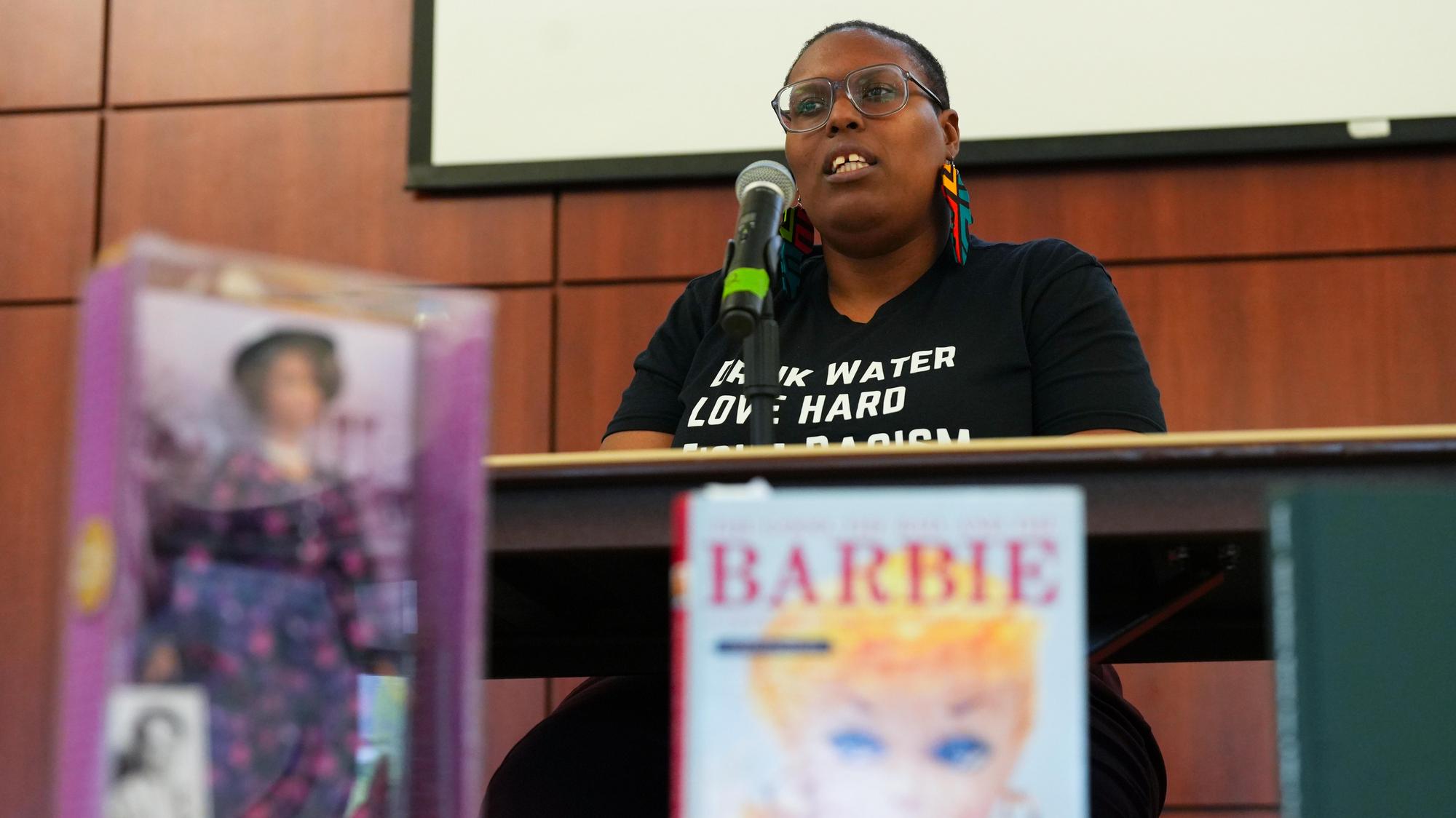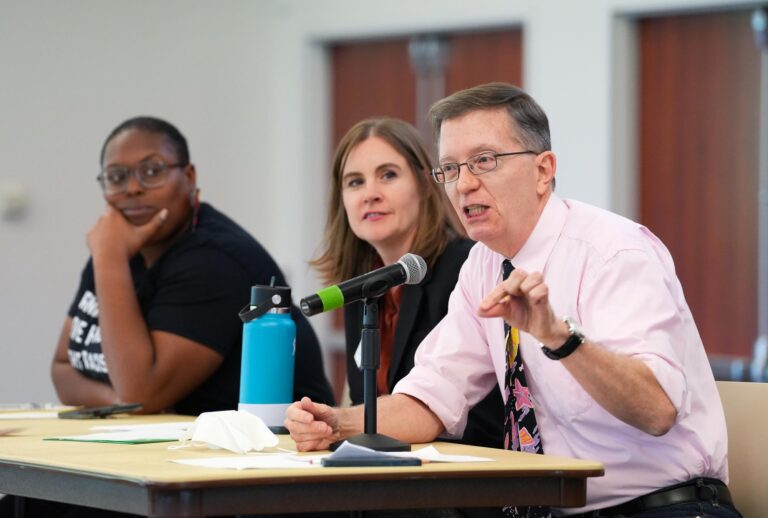‘Barbie’ CLP explores diverse perspectives on cultural phenomenon

What is “Barbie?”
Is the summer 2023 blockbuster film a feminist manifesto? A ploy to sell more toys? A critique of patriarchy and male fragility? An existentialist meditation? A triumph of marketing and commercialism, or a subversive satire of corporate capitalism?
The answer is: Yes – depending on whom you ask.

Scott Henderson, the William R. Kenan Jr. Professor of Education (right), speaks on a panel with fellow faculty members Kaniqua Robinson and Kathleen Casey at the “Unpacking Barbie” CLP event in September 2023.
A Cultural Life Program (CLP) event gave more than 200 students and faculty a chance to share their own opinions on the movie that has earned more than $1 billion worldwide. About 50 people had to be turned away from “Unpacking Barbie,” led by Kathleen Casey, a professor of history and director of the Women’s, Gender and Sexuality Studies (WGSS) program; Scott Henderson, the William R. Kenan Jr. Professor of Education; and Kaniqua Robinson, an assistant professor of anthropology.
Many in the Trone Student Center audience were proud “Barbie” fans – one student reported seeing the movie seven times, while another had dyed their hair pink for the occasion – and were encouraged to discuss their own takeaways after the three faculty members presented their scholarly perspectives.
‘A sense of community’
As a historian, Casey looked back at the invention of the doll by Mattel cofounder Ruth Handler in 1959. While the official Mattel history relates that Handler was inspired by watching her daughter play with paper dolls, it omits the fact that Barbie’s design was copied from Bild Lilli, a racy German novelty doll popular with bachelors, said Casey.
The toy has since inspired several decades’ worth of spirited debate. Admiration of Barbie’s 200-plus entrepreneurial careers is balanced against accusations of promoting unrealistic beauty standards. The recent movie has provoked a similar range of conversations, Casey said.
“People are taking away these disparate meanings from the same film,” she said. “We are each pulling on the threads of the film that make the most sense to us.”
The best part of the movie, said Casey, is the continuing debate it inspires.
“These conversations are completely important and meaningful,” she said. “They help us create a sense of community and feel a little bit less alone.”
Is ‘Barbie’ inclusive?
Henderson recalled the culture-jamming campaigns of the Barbie Liberation Organization (BLO), an underground group who performed “surgery” on hundreds of Teen Talk Barbie dolls in 1993, switching their voice boxes with G.I. Joe dolls. The laughter provoked by hearing a Barbie growl “Vengeance is mine!” or a Joe chirp “I love shopping!” shows the power of ingrained stereotypes, he said.
Robinson praised “Barbie” for the joy it brought to its audiences – “different people from different backgrounds coming in, celebrating Barbie,” she said. “You saw representation in the audience.”
However, the film was diverse but not inclusive, disregarding issues such as racism and ableism in favor of a white feminist perspective, she argued. In particular, Robinson critiqued one character’s description of Ken’s patriarchal takeover of “Barbie Land” after his visit to the real world as “just like … Indigenous people and smallpox.” The line “trivialized the genocide of Indigenous people,” she said.
“I appreciate the film for starting conversations, and I don’t expect it to be a documentary,” said Robinson. “But I think in 2023, we shouldn’t have to say, ‘What about inclusivity and intersectionality when criticizing the patriarchy?’”
Continuing conversations
The “Barbie” conversation continued as the floor opened for comments. While many students agreed that the movie was a fun, nostalgic romp, several also cringed at its problematic aspects, adding to the critiques made by the speakers. One student reacted to Robinson’s response to the line referencing the genocide of Indigenous people. He related an Indigenous friend’s objection to the “smallpox” remark and his own mixed feelings about seeing a movie that many have found offensive.
“You can do both,” replied Robinson. “You can enjoy something and still critique it.”
“Unpacking Barbie” kicked off a series of events planned throughout the year by the WGSS program based on the theme “The Body.” Ultimately conceived as a three-year series, the events reflect the current expansion of the WGSS program, said Casey.
“Our goal is to become a flagship program in the Southeast,” she said, “and I think Furman is uniquely positioned to make this happen.”